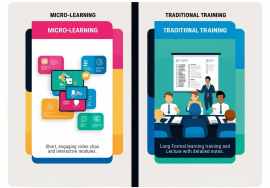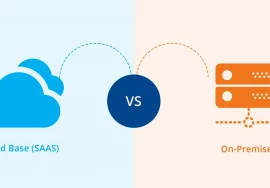
Upskilling vs. Reskilling: What’s Best for Your Workforce?
Am I industry-ready??
In today’s fast-changing work environment, keeping up with industry trends is essential for business success. Organizations must invest in workforce development, but the question arises: Should you focus on upskilling or reskilling? While both strategies improve employee capabilities, they serve different purposes.
“A study found that 74% of Millennials and Gen Z workers would quit a job that did not offer upskilling and development opportunities.”
What Is Upskilling?
Upskilling refers to enhancing employees’ skills to help them advance in their current roles. This strategy ensures that professionals stay updated with industry trends, new technologies, and best practices. Examples include:
- Technical training for IT professionals to master emerging software.
- Soft skills enhancement for managers to improve leadership and communication.
- Advanced certifications for employees to refine their expertise in a specific field.
Benefits of Upskilling
- Increases employee efficiency and productivity.
- Improves job satisfaction and career progression.
- Reduces hiring costs by developing internal talent.
What Is Reskilling?
Reskilling involves training employees for a new job or role within the company. This approach is beneficial when businesses undergo digital transformation, automation, or structural changes. Examples include:
- A customer service representative learning data analysis to transition into a business intelligence role.
- Factory workers are being trained in robotics to adapt to automation.
- Marketing professionals are shifting to digital analytics to meet evolving business demands.
Benefits of Reskilling
- Helps retain employees during industry shifts.
- Fosters a flexible and adaptable workforce.
- Reduces layoffs by repurposing existing talent.
Choosing Between Upskilling and Reskilling
Determining whether upskilling or reskilling is the best option depends on various factors:
|
Factor |
Choose Upskilling If… |
Choose Reskilling If… |
|
Business Needs |
You need employees to stay competitive in their roles. |
Your company is undergoing a structural shift. |
|
Employee Goals |
Employees want career progression within the same field. |
Employees are open to transitioning into a new role. |
|
Industry Trends |
Emerging trends require deeper expertise. |
Automation or AI is changing job requirements.
|
How Webalearn Supports Workforce Development
Webalearn, a leader in digital learning solutions, helps businesses navigate this decision by providing tailored training programs. We specialize in crafting customized digital learning solutions that align with your business objectives.
Our expertise includes:
- Tailored e-learning programs for both upskilling and reskilling.
- Gamified training courses for engaging skill development.
- VR-based immersive learning solutions for hands-on experience.
- Change management strategies to ensure a smooth transition.
Frequently asked Question (FAQs)
- Is upskilling or reskilling more cost-effective?
Both strategies are cost-effective compared to external hiring. However, upskilling may require less investment if employees only need incremental improvements. - How do I identify which employees need upskilling vs. reskilling?
Conduct skills assessments and career path discussions to determine whether an employee needs enhancement in their current role or a transition to a new one. - Can small businesses benefit from upskilling and reskilling?
Absolutely! Small businesses can leverage digital learning platforms like Webalearn to train employees without the high costs of external hiring.
Conclusion
Both upskilling and reskilling play a crucial role in preparing employees for the future of work. While upskilling sharpens existing skills, reskilling equips employees for new career paths. Webalearn provides cutting-edge digital learning solutions to help organizations implement both strategies effectively. Contact us today to build a workforce ready for tomorrow’s challenges!







